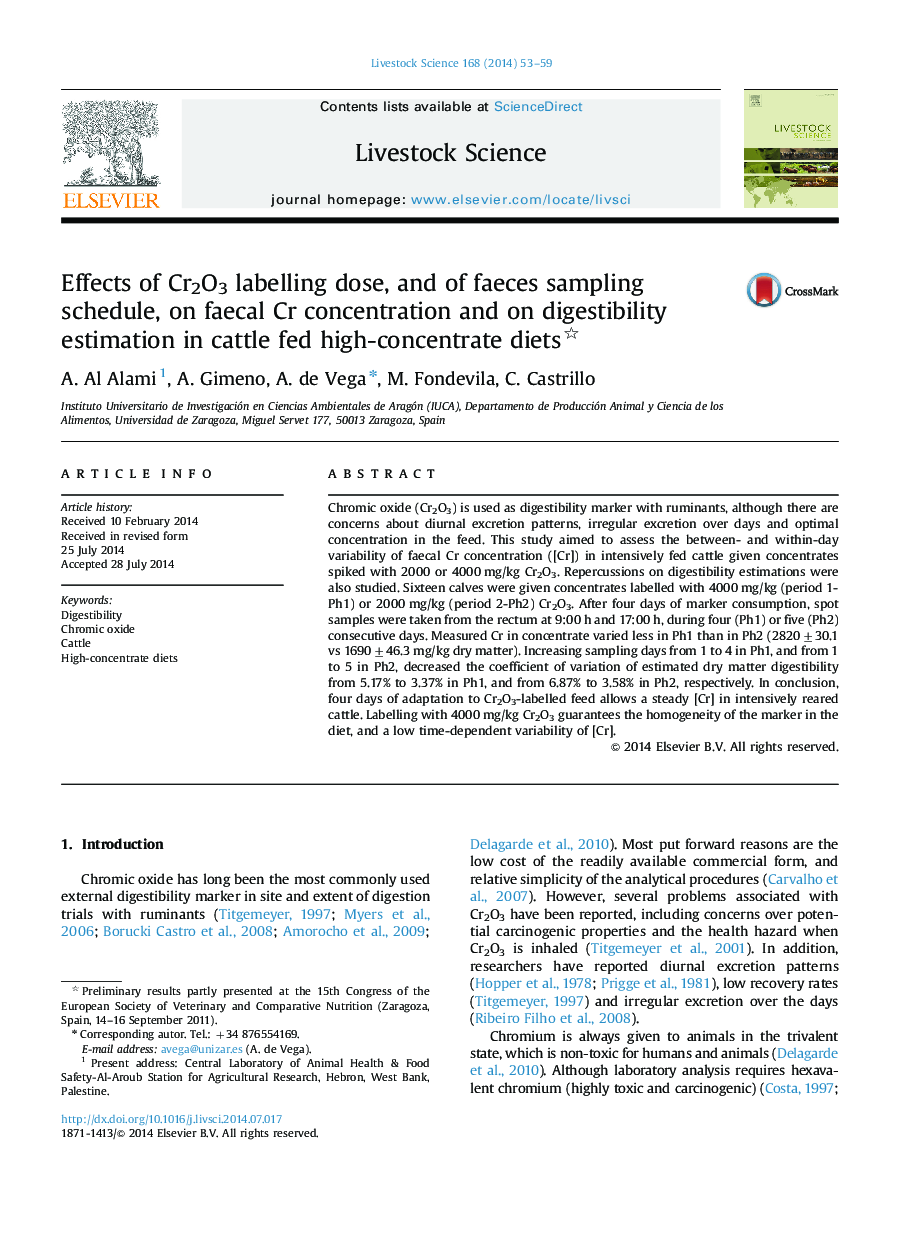| کد مقاله | کد نشریه | سال انتشار | مقاله انگلیسی | نسخه تمام متن |
|---|---|---|---|---|
| 2447265 | 1553964 | 2014 | 7 صفحه PDF | دانلود رایگان |
عنوان انگلیسی مقاله ISI
Effects of Cr2O3 labelling dose, and of faeces sampling schedule, on faecal Cr concentration and on digestibility estimation in cattle fed high-concentrate diets
ترجمه فارسی عنوان
اثرات دوز زرد کریستال و برنامه های نمونه برداری مدفوع بر میزان غلظت کریستال مایع و برآورد هضم در گاوهای حاوی رژیم های با غلظت بالا
دانلود مقاله + سفارش ترجمه
دانلود مقاله ISI انگلیسی
رایگان برای ایرانیان
کلمات کلیدی
قابلیت هضم، اکسید کروم، گاو، رژیم های با تمرکز زیاد،
موضوعات مرتبط
علوم زیستی و بیوفناوری
علوم کشاورزی و بیولوژیک
علوم دامی و جانورشناسی
چکیده انگلیسی
Chromic oxide (Cr2O3) is used as digestibility marker with ruminants, although there are concerns about diurnal excretion patterns, irregular excretion over days and optimal concentration in the feed. This study aimed to assess the between- and within-day variability of faecal Cr concentration ([Cr]) in intensively fed cattle given concentrates spiked with 2000 or 4000 mg/kg Cr2O3. Repercussions on digestibility estimations were also studied. Sixteen calves were given concentrates labelled with 4000 mg/kg (period 1-Ph1) or 2000 mg/kg (period 2-Ph2) Cr2O3. After four days of marker consumption, spot samples were taken from the rectum at 9:00 h and 17:00 h, during four (Ph1) or five (Ph2) consecutive days. Measured Cr in concentrate varied less in Ph1 than in Ph2 (2820±30.1 vs 1690±46.3 mg/kg dry matter). Increasing sampling days from 1 to 4 in Ph1, and from 1 to 5 in Ph2, decreased the coefficient of variation of estimated dry matter digestibility from 5.17% to 3.37% in Ph1, and from 6.87% to 3.58% in Ph2, respectively. In conclusion, four days of adaptation to Cr2O3-labelled feed allows a steady [Cr] in intensively reared cattle. Labelling with 4000 mg/kg Cr2O3 guarantees the homogeneity of the marker in the diet, and a low time-dependent variability of [Cr].
ناشر
Database: Elsevier - ScienceDirect (ساینس دایرکت)
Journal: Livestock Science - Volume 168, October 2014, Pages 53-59
Journal: Livestock Science - Volume 168, October 2014, Pages 53-59
نویسندگان
A. Al Alami, A. Gimeno, A. de Vega, M. Fondevila, C. Castrillo,
